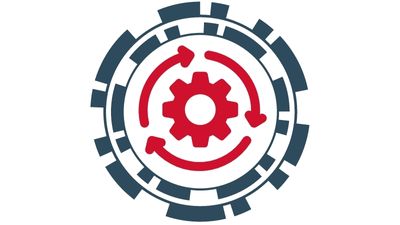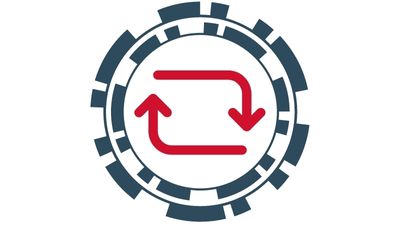
Digital Transformation and embracing digital technologies brings many benefits to manufacturers. Improving traditional processes is driving the manufacturing industry forward.
Manufacturers need to embrace digitalisation now, to keep up with competitors and open up new opportunities.
Companies that embrace digital transformation are more agile and are able to use their time more efficiently.
There are challenges in all industries and consumer expectations are changing. Now is the time to leverage digital, automate and be more efficient.
However, with businesses stretched more than ever, how can companies find the time to go digital?

Digital Transformation in Manufacturing
We know the manufacturing industry well. We work closely with our resellers and customers, and conduct our own research and learning. We’ve listened to manufacturers about the challenges they face, and how digital technologies are helping to overcome them. We’ve seen many great examples of manufacturers embracing digital transformation and reaping the benefits.
Read our tips below to learn how to approach digital technologies without additional resources and huge time commitments.
Scalability is the Best Strategy
The prospect of creating long-term goals to digitally transform can seem daunting. Of companies that haven’t started with digital transformation, 59% fear it might be too late.
It’s never too late to improve any process. It’s important to remember you don’t have to make big changes all at once. Digital transformation is scalable.
Sometimes, with what feels like a ‘big problem’, it can be easy to assume it needs a big solution, requiring a lot of time, money, and change. This doesn’t need to be the case.
The key is identifying an appropriate and achievable goal and then breaking it down into small steps. This reduces the time and cost required to plan and implement the strategy but also helps with employee engagement. Small changes over a period of time are much easier to accept and adapt to. Breaking down the task makes it more attainable and there’s also a quicker sense of satisfaction. Seeing results sooner boosts attitudes toward digital transformation and increases adoption and acceptance.
The ideal strategy for digital transformation is to start small and build on your successes.
You can identify where to focus by mapping out your current strategy and highlighting where there are gaps.
Reviewing how to fill these gaps leads to thinking about solutions. Do you have the most appropriate applications for your processes? Are you using the right mix of technologies? Are there areas of processes that your staff feel are wasting time?
Solving some of the identified problems on a small scale little by little contributes to an overall payoff. Building solutions incrementally with small gains is highly beneficial to the entire process.


Agility is Key to Staying Ahead
Agility has always been a key driver of successful business operations but now more than ever we are seeing the importance of businesses being able to pivot and respond quickly to changing factors. Markets and trends are constantly moving and evolving, bringing new challenges, and new opportunities. It is important that businesses can adapt to these changes quickly and effectively, or risk falling behind.
Digitalisation is key to enabling industries to meet changing customers’ needs.
Businesses without a strong digital strategy are likely to struggle to be as agile as their competitors. Digitally-savvy companies are able to move faster to adapt to rapid changes in the market. They are able to embrace new opportunities quicker and see benefits sooner.
Customer needs and expectations never stand still. The companies that move quickly to meet, and exceed these expectations are the ones that will thrive.
Saving Time, Benefitting from Quick Wins
Quick wins are low risk, easy to identify, have a high probability of creating a positive impact, and don’t have to take a lot of time to implement. They can help you adopt an incremental way of working and can be built upon for a longer-term gain.
Small steps help you implement digital transformation at your own pace, and review productivity at each step.
Quick wins provide an opportunity to save time and costs, allowing more time and resources to be directed towards plans for a longer-term strategy and further implementation.
Here are some tips to identify quick wins in your organisation:

Making the most of existing technologies
What existing technologies do you have in your business? Are you using them to their full potential? Are there features and functionality you’re not using? Does one team use a digital tool that would also be useful for another team? Do you have access to additional tools that you’re not using? For example, if you have SOLIDWORKS, are there any Xpress products you could use? Xpress tools are available for free and quick to activate with all SOLIDWORKS licenses.

Testing technologies with free versions & trials
Free versions are a great way of identifying how useful a tool is for you and your teams. Free versions offer entry-level functionality to help you identify what you need from a tool to reach your goals. Free trials give the opportunity to test out features, and give you a head start on implementing a tool. Both options are a great way of figuring out what works for you, before committing to a tool and investing time and money.

Identifying constraints within your teams
There are often issues within processes that team members get used to, and are happy to work around. Or, perhaps because it’s always been that way, they don’t want to raise it as an issue. However, empowering teams to question processes and suggest improvements encourages them to highlight where inefficiencies could be reduced. Identifying bottlenecks, and areas where processes are often delayed is key to making improvements.
Automate Processes to Save Time
Automating business processes creates a more effective and efficient workforce. Valuable time saved can be used to innovate more and add value. Automation can help you:
- Make data-driven decisions
- Reduce errors
- Standardise
- Promote communication between teams
Through automation, complex business processes are being made smarter.
Business Process Automation is enabling businesses to become more streamlined. Automation uses information and data to manage routine processes, reduce errors and costs, increase productivity and improve efficiency.
By using technology to automate key business processes, organisations are driving a positive change and are already being rewarded.
Improving internal processes has a positive impact on customer experience too. A fast process with fewer errors saves time for you and the customer, whilst also building customer loyalty and retention.


Maria Sarkar
Co-Founder & VP, DriveWorks
“Digital Transformation sounds daunting! It sounds like yet another initiative promoted in a report, or industry white paper that most of us think we don’t have time for. Me included, I feel busy, I am busy.
But then I take a step back and think about what it actually means for me and what it means for our business. Here’s my very simplistic take on why we should make time for Digital Transformation…”
“I used to mail Christmas cards to my friends and family. When the time came to write the addresses on the envelopes, I’d dig out my diary and look through my handwritten list, which had grown and grown over the years. It wasn’t well sorted, it had started as a list, and been added to as I’d met people. It wasn’t sorted by A to Z or by country, sometimes it grouped people together as a family, and sometimes it was an individual name. Some people had lines through them and an arrow to a new line – they’d got married, changed their names or moved at some point and I’d hastily scrawled a new address – hmm was that a 5 or an 8 there? In other cases I’d added birthdays. As the list grew, it began getting out of hand.
So several years ago I took a step back and decided to invest an hour sorting out my list. I “digitized” all the information in it. But I didn’t just copy the list, I gave it structure. I thought about how to organize the information, and what I wanted to be able to do with it, now and in the future.
Once I had done that the rest was easy. I picked up the task for 30 minutes each day over a coffee, and within 2 weeks, I’d moved everything over.
Now that it was digitized, I didn’t need to handwrite the addresses, I could automatically print labels to stick on the envelopes. Or I could use the data at other times of the year to show me all the people with birthdays coming up in the next month.
With the data now in digital format it’s now so easy to upload all my contacts, keep them up to date in one place and send personalized messages throughout the year. Thanks to companies like Moonpig and Funky Pigeon I can even send customized cards and don’t need to go to the post office to buy stamps. A massive time saver for me and a guaranteed personal message for my friend!
That time spent transforming a mundane task has resulted in massive time savings for me and guaranteed thoughtful personal messages for my friends, ensuring we keep in touch despite our busy lives!
And although this is a personal example, the same principle applies in so much of what we do in the workplace too, especially when Digital Transformation is linked to automation.”
“So Digital Transformation doesn’t have to be daunting and doesn’t mean you need to stop everything else you’re doing. It’s a means to an end. And whilst I’m a fan of the bigger vision, it’s good to break things down, start small and little by little use saved time to Automate More.”
How are DriveWorks customers saving time with digital?
Dolphin Solutions, headquartered in Robertsbridge, UK, design and supply a range of products and accessories for commercial washrooms.
Since implementing DriveWorks, Dolphin has achieved a number of goals:
- Reduce time-consuming, repetitive design tasks
- Create a great customer experience
- Change processes that used to be manual to being automated
- Create an aesthetically pleasing online configurator that is easy to use
Find out more about how Dolphin Solutions is automating with DriveWorks here.